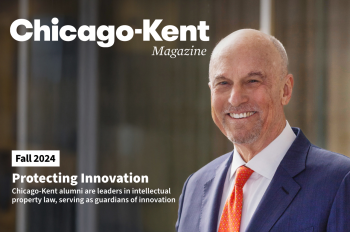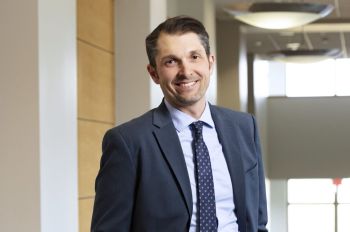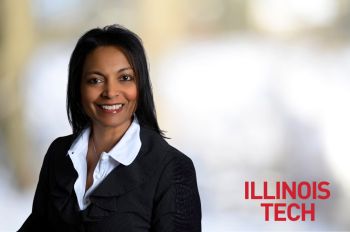Physicists at Illinois Institute of Technology start analyzing the world’s biggest data set: results could shed light on the nature of matter
Chicago, IL — July 9, 2001 —
Mike McVady is a College of DuPage (CoD) student going into his second year at the two-year junior college. But this summer, instead of spending time in his native town of Wooddale, he’ll spend two days a week at Illinois Institute of Technology delving into the nature of matter and anti-matter with Christopher White, Assistant Professor of Physics at IIT.
At IIT, McVady will work on a project called HyperCP – an experiment designed to determine if antimatter obeys the same laws of physics as regular matter. The experiment, which was run at Fermilab in 1997 and 1999, generated a whopping 120 terabytes of information recorded on more than twenty-thousand 8mm tapes – more than any previous particle physics experiment. It will be McVady’s job to help White begin to sort out the data.
“This is a mind-numbing amount of data,” says White. “We're collaborating with physicists from Berkeley, Virginia, Michigan, Alabama, and Taiwan; however, there's plenty of data to go around. In fact, there's so much to do, that without the help of a small army of students, we're unlikely to utilize the complete data set. This is the largest sample of non-leptonic hyperon decays ever recorded and we hope to discover something exciting.”
McVady, 19, is the first CoD student to do an internship in IIT’s physics department. The partnership between the two schools allows CoD to offer opportunities for students interested in physics that are not available at the two-year college, like the chance to work at Fermilab. McVady is considering transferring to IIT where he can get a degree in physics, which is not offered at CoD.
“Establishing a link between CoD and IIT benefits everyone. Collaboration allows us to bring the best and brightest into our research programs while providing them with exposure to cutting-edge research, exposure that most students never get," says White.
McVady’s physics professor at CoD, Tom Carter, says that he hopes more of his students will be able to spend the summer at IIT doing advanced research in physics and getting involved with Fermilab National Accelerator Laboratory in Batavia, IL, where IIT physics faculty do high energy physics research. “We’re very eager to continue to work with IIT on undergraduate research,” says Dr. Carter. “It gives students at College of DuPage a unique opportunity that is unavailable at most two-year junior colleges.”
So far, says McVady, “working with Dr. White at IIT is interesting. I haven’t been here very long yet, but I’m looking forward to a summer of learning about how high-energy physics and physicists work.”
HyperCP and CP Violation
Physicists collaborating on the HyperCP project (from IIT, UC Berkeley, University of Michigan, University of South Alabama, University of Virginia and others) hope that it will shed some light on something called CP or symmetry violation. Physicists have long held that anti-matter should behave in the exact same way and obey the same rules of physics that regular matter does. “Physicists love symmetry,” says White. But, it has been observed that anti-matter (which can only be created in high-energy physics tools such as Fermilab’s synchrotron) behaves ever-so-slightly differently than matter. To confirm this “violation,” physicists working on the HyperCP experiment decided to try to record data from as many hyperons (a type of particle) and anti-hyperons as they could to see if they behaved differently and how. Because the difference in behavior between these particles and anti-particles is so minute, they physicists had to record enormous amounts of data.
A long-held theory in physics is that when the universe came into being during the Big Bang, equal amounts of matter and anti-matter were created. When matter and anti-matter get together, they annihilate one another, releasing a burst of energy. Physicists have been wondering why matter and anti-matter have not canceled each other out after the billions of years that the universe has been around. “Its clear that we live in a universe dominated by matter, but where did all the anti-matter go, and why hasn’t it united with matter to erase the universe,” asks White.
The answer may lie in the fact that anti-matter behaves differently than matter. The HyperCP experiment hopes to shed some light on how anti-matter behaves.
About Illinois Institute of Technology
Illinois Institute of Technology, also known as Illinois Tech, is a private, technology-focused research university offering undergraduate and graduate degrees in engineering, science, architecture, business, design, human sciences, applied technology, and law. One of 16 institutions that comprise the Association of Independent Technological Universities (AITU), Illinois Tech offers exceptional preparation for professions that require technological sophistication, an innovative mindset, and an entrepreneurial spirit.




